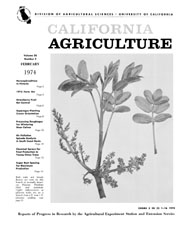All Issues

Cover:
Both male and female flowers are seen on this branch of normally dioecious
Pistacia. Pistillate (left) and staminate (right) inflorescences at adjacent nodes are on a branch from a P. Vera x P. atlantica seedling.
February 1974
Volume 28, Number 2
Volume 28, Number 2





